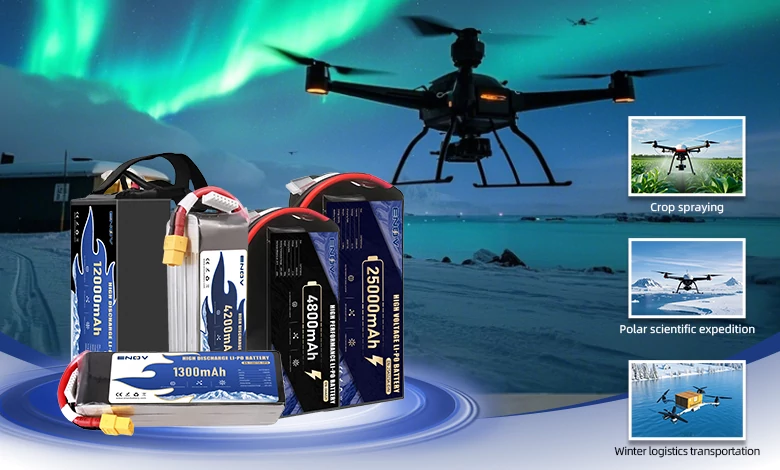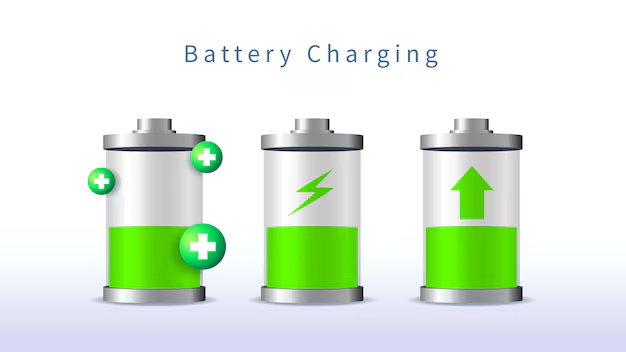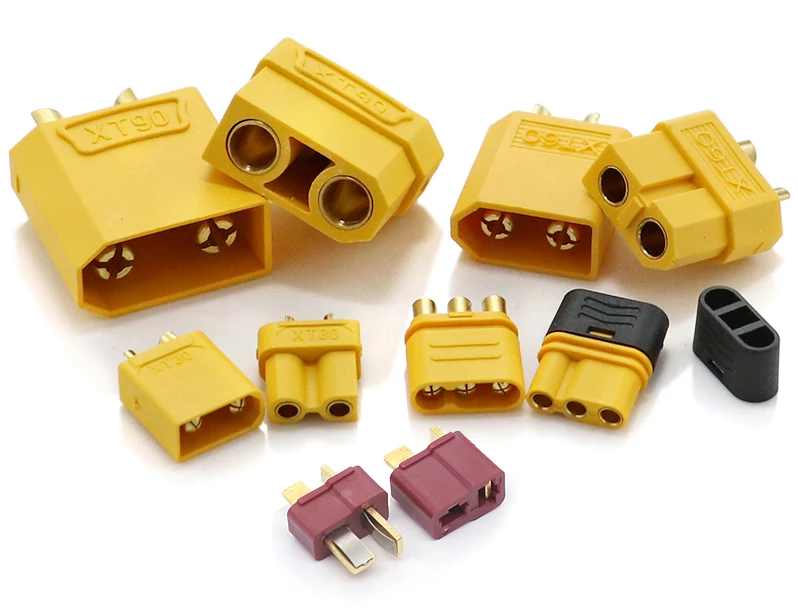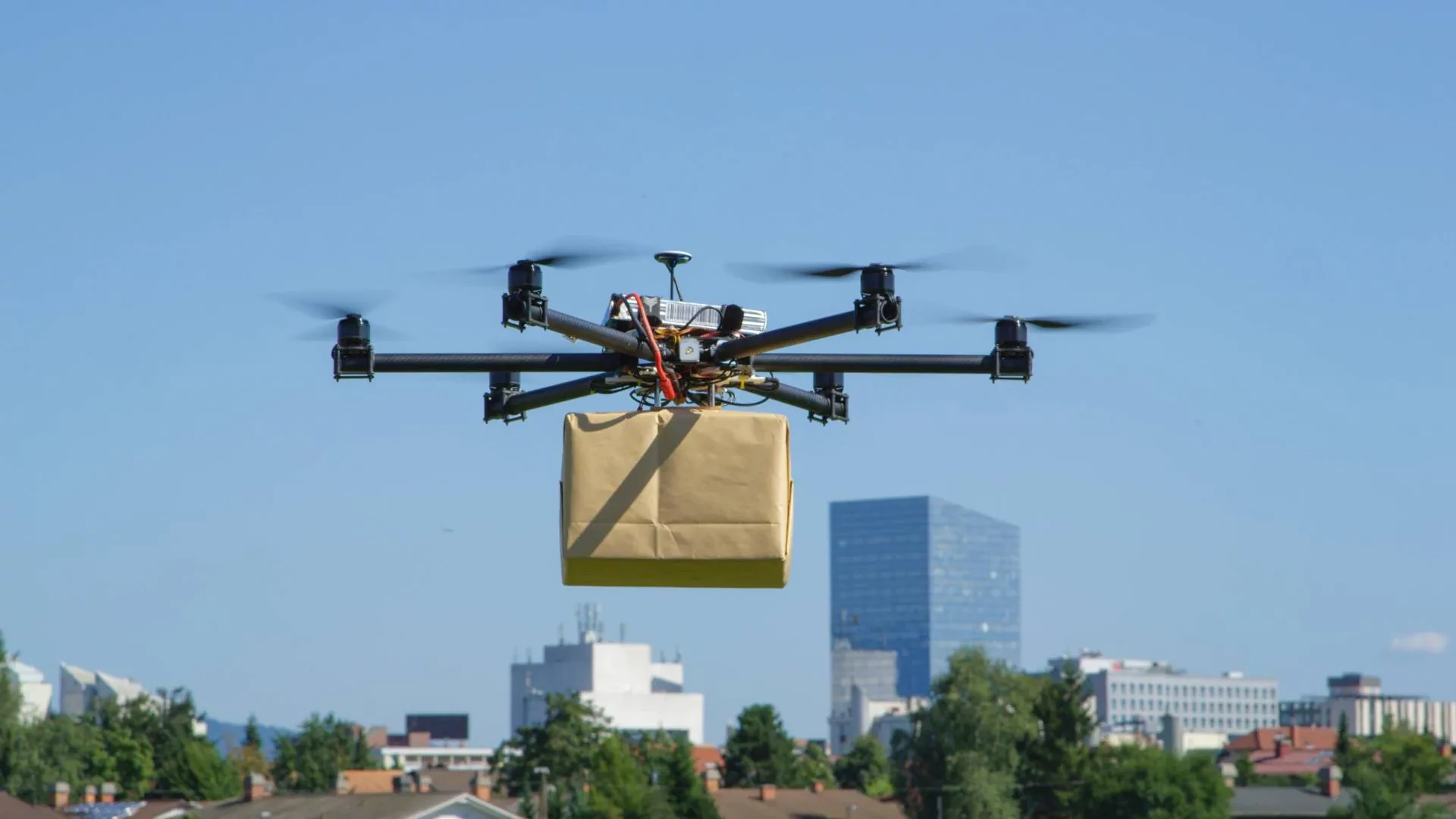Common Types and Applications of Drones in Agriculture

ENOV High-Energy drone batteries power industrial and commercial drones. Delivering 220–320 Wh/kg energy density, they enable long flight times (30+ mins) and support fast charging (2C). Perfect for aerial photography, surveillance, and delivery drones.
In modern agriculture, drones have become a core tool for enhancing production efficiency and optimizing management practices. For B2B users such as agricultural enterprises and cooperatives, selecting the right type of drone directly impacts operational costs and returns. This article analyzes the value of drones in agriculture, specific application scenarios, advantages and disadvantages, and mainstream drone types, providing practical insights for B2B users.
I. Core Value of Drones in Agriculture
By integrating technologies such as GPS positioning, smart sensors, and automated control, drones have overcome the limitations of traditional agriculture, which relied heavily on experience and manual labor, enabling precision, efficiency, and intelligent production management. Their core value is reflected in three aspects:
1. Reduced Labor Costs: Replacing humans in high-intensity, high-risk tasks such as pesticide spraying.
2. Improved Resource Utilization: Minimizing waste of pesticides and fertilizers through precise application and variable-rate fertilization.
3. Data-Driven Decision-Making: Optimizing irrigation, pest control, and other management strategies based on monitoring data to increase crop yields.
II. Specific Applications of Drones in Agricultural Tasks
1. Crop Protection (Most Common Application)
Crop protection is the most mature application of drones in agriculture, primarily used for pesticide spraying, foliar fertilization, and growth regulator application.
Method: Equipped with smart tanks and atomizing nozzles, drones follow GPS-planned routes to ensure uniform coverage with “fixed height, speed, and flow rate.”
Key Advantages:
10–30 times more efficient than manual labor (approximately 1 minute per acre).
Reduces human exposure to chemicals and saves 30% or more in water and pesticide usage.
Ideal Scenarios: Large-scale crops (e.g., rice, wheat), orchards, greenhouses, and terrains difficult for humans to access, such as terraced fields and steep slopes.
2. Crop Inspection and Monitoring
Drones equipped with high-resolution cameras, multi-spectral sensors, or thermal imaging devices can analyze crop growth, detect early signs of pests or diseases, and monitor soil moisture.
Method: Capture high-resolution images or spectral data to generate health maps (e.g., NDVI vegetation index), quickly identifying problem areas.
Key Value:
50 times more efficient than manual inspections.
Detects issues 3–7 days earlier, reducing yield loss risks.
Ideal Scenarios: Periodic monitoring of large fields or precision management of high-value crops like grapes and citrus.
3. Seeding (Emerging Application)
Drones can perform precision seeding for crops such as rice, vegetables, and forage, especially in challenging terrains.
Method: Use pneumatic or centrifugal seeding mechanisms to distribute seeds evenly at preset densities, with adjustable parameters like spacing and volume via apps.
Key Advantages:
5–10 times more efficient than manual seeding.
Eliminates the need for seedling cultivation (e.g., direct rice seeding) and operates in areas inaccessible to machinery.
Limitations: Sensitive to seed size (uneven distribution if too large or small); low adoption rate due to technical constraints.
4. Field Mapping and Planning
Using Li-DAR or photogrammetry, drones create high-precision 3D field maps to assist in planting layouts and irrigation design.
Method: Collect data on terrain, elevation, and soil distribution to generate drainage or fertility maps for informed decision-making.
Ideal Scenarios: Newly cultivated land planning or precision zoning in large farms.
III. Advantages and Disadvantages of Agricultural Drones
1. Core Advantages
Precision and Efficiency: Centimeter-level accuracy ensures uniform application, with efficiency surpassing manual and traditional machinery.
Adaptability: Operates in complex terrains (e.g., terraces, orchards) where ground machinery cannot.
Safety and Sustainability: Reduces human exposure to chemicals and minimizes environmental pollution.
Data Support: Sensor-collected data enables scientific decision-making for precision agriculture.
2. Main Disadvantages
Limited Battery Life and Payload: Electric drones typically last 15–30 minutes per flight, with payloads of 5–50L, requiring frequent battery swaps for large areas.
Environmental Sensitivity: Wind speeds above Level 5 affect spraying accuracy; low temperatures reduce battery performance; rain halts operations.
High Costs and Maintenance: Professional models (e.g., fixed-wing, helicopters) cost over $10,000, require skilled operators, and involve complex upkeep.
Regulatory Restrictions: Some regions impose flight altitude and range limits, with beyond visual line of sight (BVLOS) operations needing special permits.
IV. Common Agricultural Drone Types by Structure
1. Multi-Rotor Drones (Most Widely Used)
Design: 4–8 rotors (e.g., quad-copters, hexacopters); electric-powered; vertical takeoff and landing (VTOL).
Pros:
Easy to operate (2–3 days of training); no runway needed.
High precision and agility for variable-rate tasks.
Affordable ($2,000–$6,000 for entry-level models).
Cons:
Short battery life (15–30 minutes).
Weak wind resistance (ineffective above Level 5 winds).
Limited payload (5–25L).
Ideal Use: Small to medium farms, orchards, terraces.
2. Fixed-Wing Drones
Design: Airplane-like wings; requires runway or catapult; electric or fuel-powered.
Pros:
High efficiency (60–100 km/h; covers 100–500 acres per flight).
Long endurance (1–4 hours for fuel-powered models).
Strong wind resistance (operates in Level 6–8 winds).
Cons:
Needs takeoff/landing space; unsuitable for small or mountainous plots.
Limited to monitoring and mapping (cannot hover).
Expensive ($10,000+); high skill threshold.
Ideal Use: Large-scale farms, monitoring staple crops (wheat, corn).
3. VTOL Fixed-Wing Drones (Balanced Efficiency and Flexibility)
Design: Combines multi-rotor VTOL with fixed-wing cruising; electric or hybrid-powered.
Pros:
No runway needed; covers 200–800 acres per flight.
Moderate endurance (1–2 hours); adaptable to hills and small plots.
Multifunctional (spraying and monitoring).
Cons:
Expensive (30–50% pricier than multi-rotor; $15,000–$40,000).
Complex maintenance (dual propulsion system).
Ideal Use: Medium farms, mixed terrains (hills, slopes).
4. Single-Rotor Drones (Heavy-Load Applications)
Design: Helicopter-like (main rotor + tail rotor); fuel-powered.
Pros:
High payload (20–200L); ideal for large-scale spraying or seeding.
Stable in winds (Level 5–6); strong droplet penetration (e.g., sugarcane).
Cons:
Very expensive ($15,000–$50,000); requires professional maintenance.
Complex operation; needs certified pilots.
Ideal Use: Large cooperatives, vast flat-lands.
V. Drone Selection Guide for B2B Users
Small Farms (<50 acres): Prioritize electric multi-rotor drones for cost-effectiveness.
Medium Cooperatives (50–500 acres): Combine multi-rotor (precision tasks) with fixed-wing (large-area monitoring).
Large Farms (>500 acres): Use VTOL fixed-wing (hilly areas) or single-rotor drones (flat-lands) for efficiency.
High-Value Crops (e.g., orchards): Multi-rotor drones for close-range precision work.
Drone selection should consider plot size, terrain, crop type, and budget. Future advancements in hydrogen fuel and AI will further enhance versatility and endurance, lowering barriers for B2B adoption.
Quick inquiry
Drop us a line, and we’ll get back to you within 24 hours.

Ariana Yuan
Digital Operations Manager
Website Planning|Marketing Project Management for Drone Batteries|Scheduled Content Refresh|SEO Optimization

Ariana Yuan
Digital Operations Manager
Website Planning|Marketing Project Management for Drone Batteries|Scheduled Content Refresh|SEO Optimization




